Railroads are generally thought of as extremely large, heavy and powerful entities. Their primary design and function was to be able to travel great distances with the aid of engineered cuts, fills, bridges and tunnels that enabled locomotives and their cars the ease of crossing wide plains and tall mountain ranges with great speed and ease.
With this fact in mind, it is easy to understand why the vast majority of photographic and artistic attention has been dedicated to illustrating the drama and excitement of railroads and their locomotives while conquering these geographic barriers.
What I have chosen to examine in this edition is some of the inner workings of a few of the overlooked pieces of hardware that is, or was at one time, a vital part of making the drama and excitement of crossing those mountain ranges and desert plains possible. Lanterns, semaphores and incandescent bulbs were once widely used on every railroad in the United States, North America and elsewhere around the world. The advancement of technology, the LED and computer chip to name a few, has rendered all of these items undesirable and in some cases illegal. Most are no longer visible in the landscape of today’s mainline railroad environment.
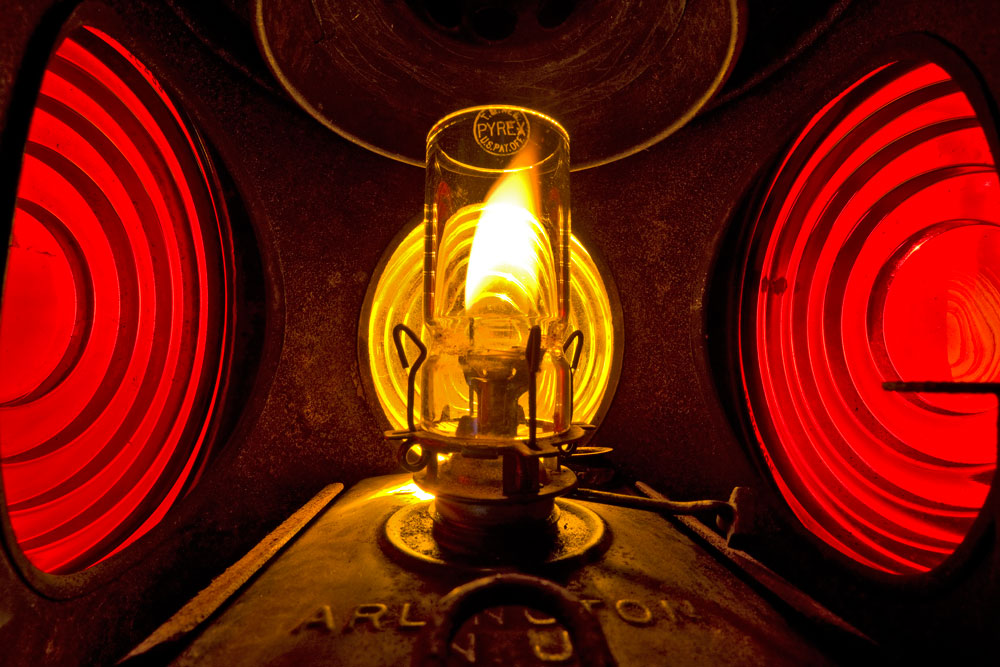
In 1908, the Corning Glass Works of New York developed Pyrex glass based on a request from the railroads to produce lantern glass that would not break when the hot glass was struck by rain or snow. Corning developed globes made from low-expansion glass that could withstand the abuses of weathering and rough handling by employees who readily broke the flint type glass globes of previously manufactured lamps and lanterns. Pyrex was later developed for use in switch lamps to act as a heat deflector and also to prevent the wind from blowing out the flame inside of the lamp housing. Pyrex was introduced to the public in 1925 and became universally accepted as tough, durable cookware that has since been used in millions of homes around the world. This photo is a study of a lantern at the Nevada Northern Railway that I made in 2009.
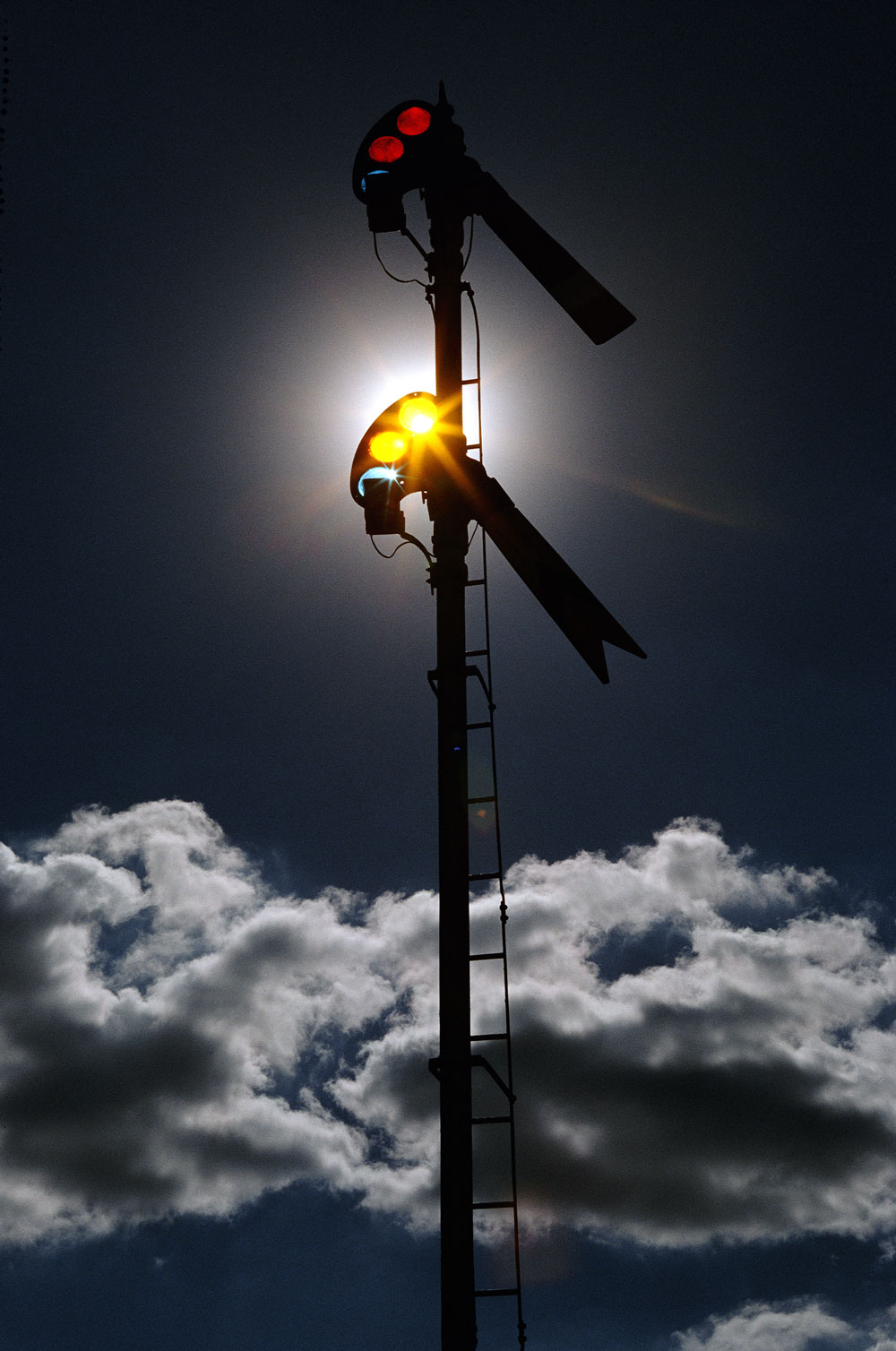
The Union Switch & Signal Style B semaphore was once the preeminent choice of signaling for railroads such as the Southern Pacific and Union Pacific. Developed in the latter part of the 19th century, the lower quadrant semaphore was a major step forward in railroad signaling and therefore the device quickly became synonymous with safe rail travel. The Southern Pacific even used a graphic version of the Style B semaphore surrounded by their familiar circular company logo. The particular signal in this photo was once located on the Southern Pacific’s Siskiyou line through Oregon at milepost 623.7 near Cottage Grove, Oregon. The shot was made in September 2000 shortly before many of the Style B’s were removed from service.
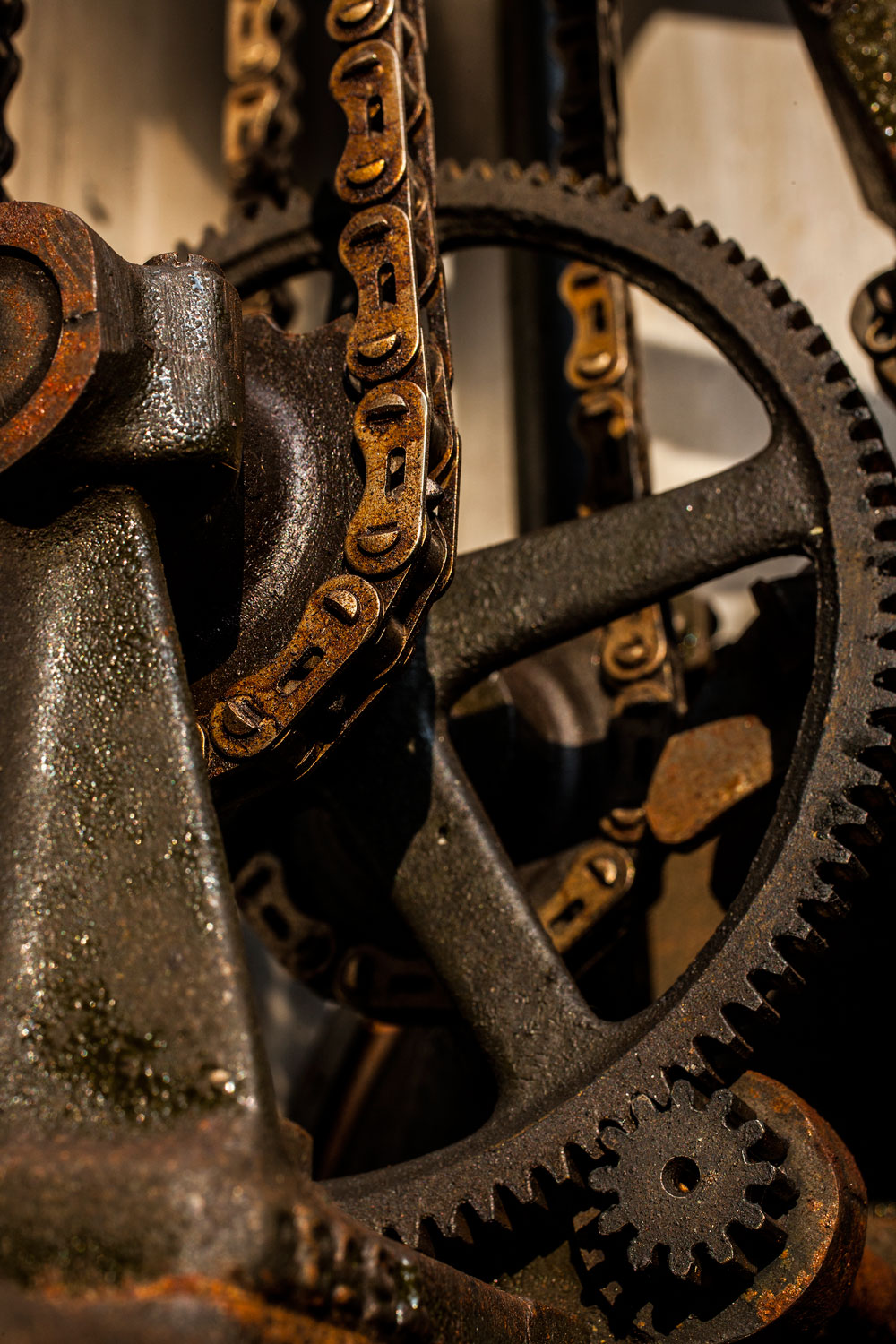
Resembling a somewhat advanced version of one of A.C. Gilbert’s Erector Sets, we’re viewing a close up study of the inner workings of the venerable Style B reduction gear and chain drive. This is the drive system that when actuated by current, regulates the position of, in this case, the “Home” and “Distance” aspects displayed by the spectacles and blades. This is part of a series of photos I made exclusively for The Trackside Photographer in June of 2016.

The heart of the Style B semaphore is its motor. This relatively small motor is capable of lifting the two 20 ft connecting rods, both of the heavy cast iron spectacles and the porcelain covered blades into the proper aspects as dictated by the current sent through the code line. The reduction gears are a great aid in enabling this low voltage motor to have the ability to lift the heavy apparatus. The glass bezel has been removed in order to reveal the fine craftsmanship of this century old signal in what was really one of the first steps in electro-mechanical robotics.
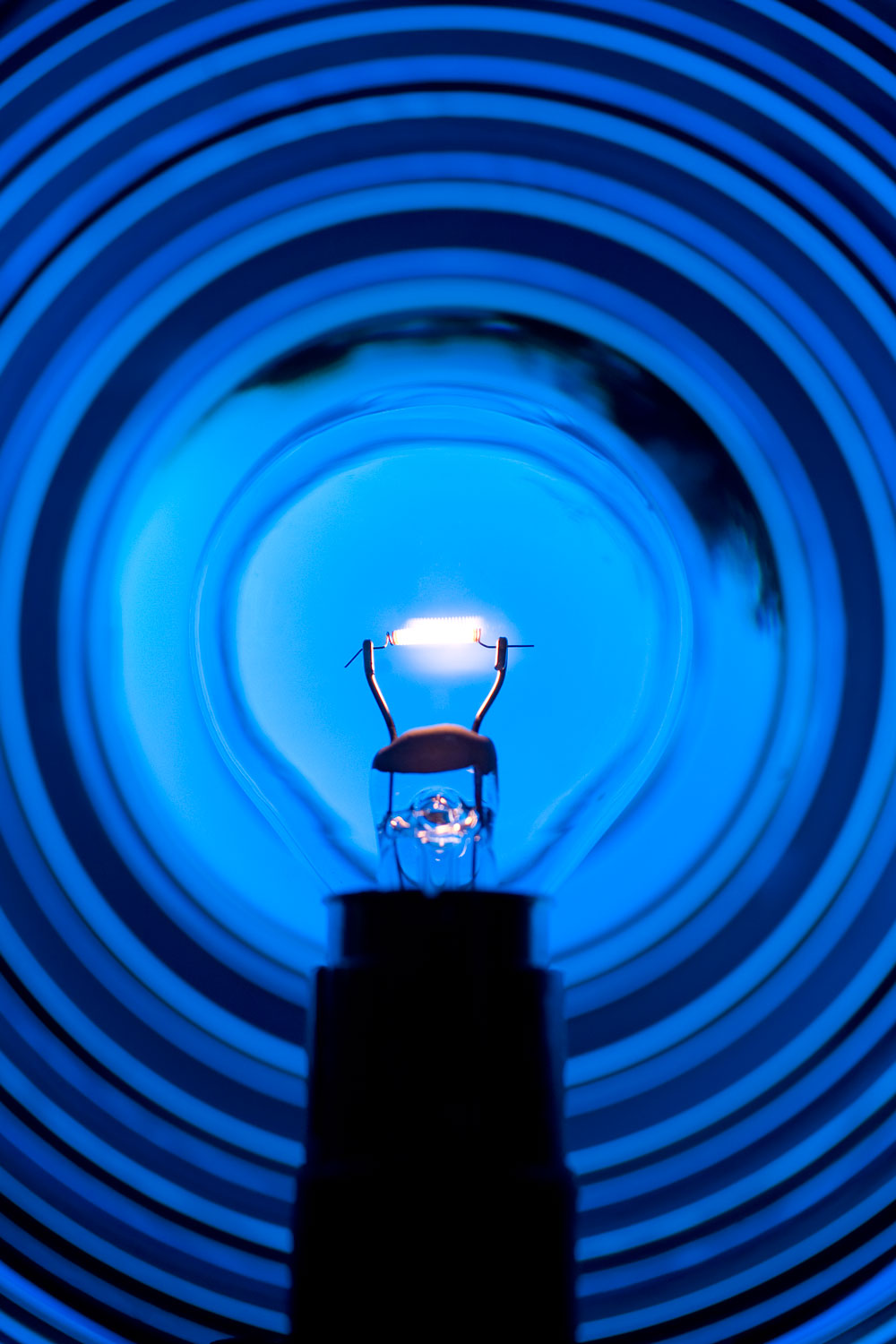
Concentric circles radiating outward from the filament inside this US&S Style R signal are a result of viewing the device from the open rear service door of the signal. The circle effect is caused by the Fresnel lens of Kopp Glass heritage. As glass bulbs with tungsten filaments eventually replaced kerosene illuminated signals and switch-lamps, the glass bulb is being nudged aside by the Light Emitting Diode or LED. For almost 100 years, the bulb was the heart and soul of every type of railroad signal imaginable. From CPL to wig wags, they all employed some form of the bayonet mount signal grade bulb. This image was made from a signal in my small collection displayed in my own back yard, which is why I was able to leisurely create this view.
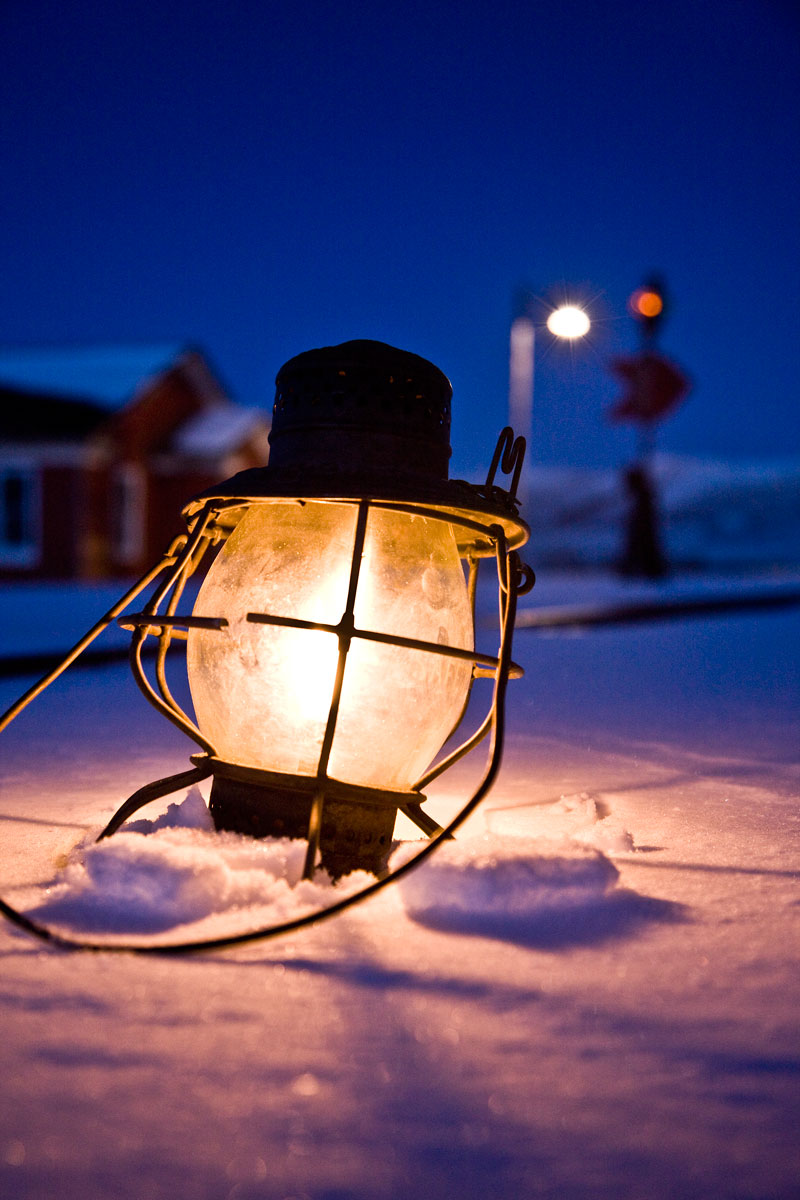
An Adams & Westlake hand lantern once used on the Denver & Rio Grande Western is probably no stranger to cold snowy evenings. The many years of use and abuse by brakeman and conductors alike is obvious in the state of its dilapidated top and disconnected bar still circling and protecting the fragile glass globe that has also seen better days. But what character this piece of railroad history has! I’m sure if it could talk it would speak of tall tales of harrowing adventures, swinging at the end of a caboose or a galloping goose while winding in and out of the highest passes the Rocky Mountains had to offer. This photo was made during one chilly evening in the relative safety of the East Ely Yards of the Nevada Northern Railway in February of 2009.
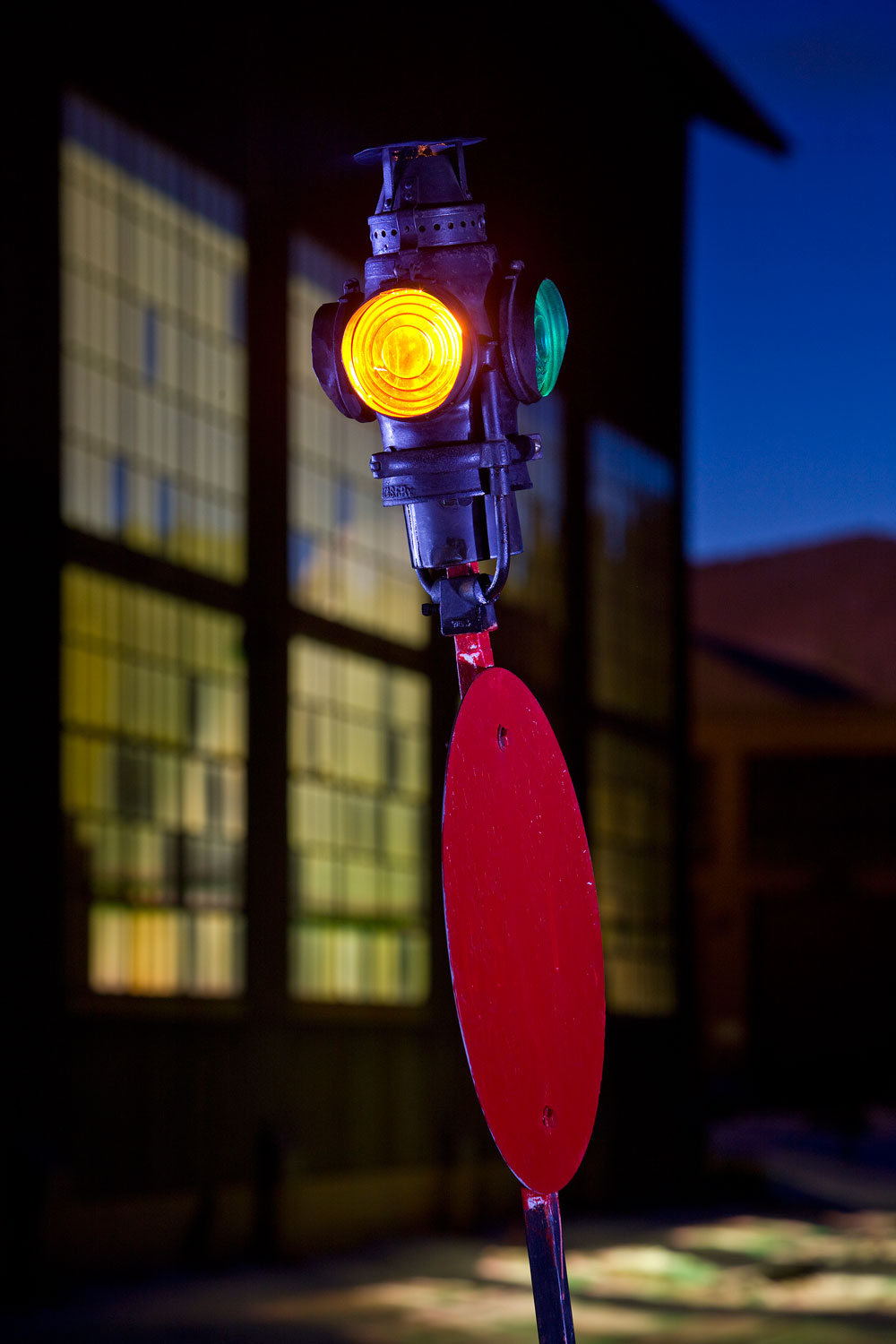
Adams & Westlake, also known as Adlake, offered to their railroad customers many styles and variations of kerosene burning switch lamps. The large fuel tank seen at the bottom of the lamp would hold enough fuel for the flame to burn for many hours without a refill. Of course you would still need someone to light the flame in the evening and put it out in the morning. As you can imagine, it was quite a labor intensive activity to keep entire railroad yards full of these lamps fueled and illumined every night of the year regardless of adverse weather conditions one may encounter while preforming this duty. Many yard track switches are still protected by lamps but have long since converted to electrically powered devices such as the US&S ES (electric switch) 20. But even these signals are now, or have been, replaced by signals using LED illumination. Recently I was in Japan and saw an example of what appeared to be an Adlake type switch lamp. However this particular model was sporting LED’s in place of the traditional colored glass rondels. The photo above was made at the Nevada Northern Railway in February of 2009 with the kind permission of the director of the railroad.
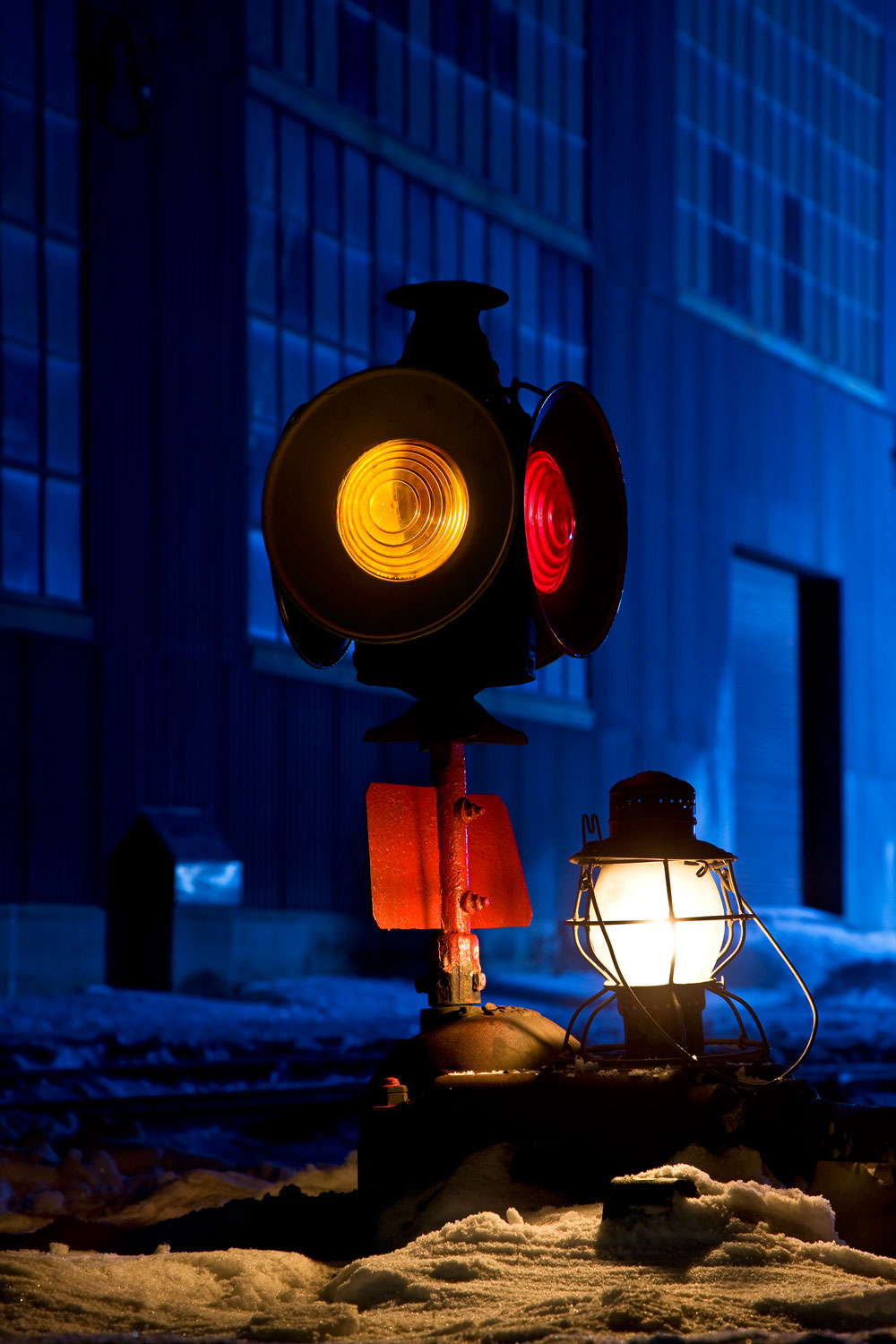
Switch lamps are often times used as a foreground element but seldom are they the primary concern in the composition. This observation was a motivating factor in creating the last few images seen in this edition. In order to accomplish a series of images concentrating on these devices, I needed two elements to come together simultaneously. First, I needed access to a railroad that would allow this sort of photographic activity on their property and secondly, I needed access to a collection of kerosene burning lanterns and lamps. I found both of these requirements conveniently located in one place: the Nevada Northern Railway (NNRY) in Ely, Nevada. Every February for the last ten years I have conducted the night photo shoots at the railroad. But the evening photo shoots only took place during one evening out of the three days the event was being held, leaving at least two other nights available for other activates. With the kind permission of the management of the NNRY, and after the locomotives and rolling stock were all tied up for the night, I set out in the early hours of the evening to start making exposures just as the sun set behind the mountains to the west of town. Fresh snow and azure blue skies formed the perfect backdrop to show off the dramatic and vibrant colors of these old lamps. We actually used kerosene to light the lamps and lanterns, and at least one flashlight to rim light the dark, rusty bodies of the lanterns for better separation against some of the muted colors of the buildings in the background. Since 2009, when I first started doing this series, I think I’ve produced about twenty five images where lamps and lanterns are the primary element in the photo. The lamp in the image above is an example of a competitor to the Adams & Westlake Co, The Dressel Railway Lamp and Signal Company, with the D&RGW hand lantern by its side.
I have enjoyed a good long run photographing railroads and trains. As with any endeavor you wish to master, you must start with simple compositions. Perhaps it’s simply shooting the train at the station or the train at the grade crossing, or maybe it’s shooting a train while crossing a bridge. Capturing images like these help master your technique, learning shutter speeds, f-stops and framing. These are all basic elements in the process of learning to document the world around you as you see it, in your time and place.
I’m very grateful for the efforts of those photographers that preceded me. Their mastering of rail related subjects to the point where I was inspired enough to imitate them is the basis of my work today. Then at some point in the game, one develops the desire to express something more than shooting the train at the station, the crossing or the bridge. You search for other subject material that challenges you to create your own mark, you own style that hopefully will inspire others to document and create their own vision with whatever image-capturing devices the future holds for them.
For the most part, I think I have accomplished everything I needed to accomplish in shooting kerosene lamps at night in the snow. I’ve moved on to explore other subjects in railroading. Maybe they’ll show up here on this site in some future edition of The Trackside Photographer.
Steve Crise – Photographs and text Copyright 2016
See more of Steve’s work at www.scrise.com